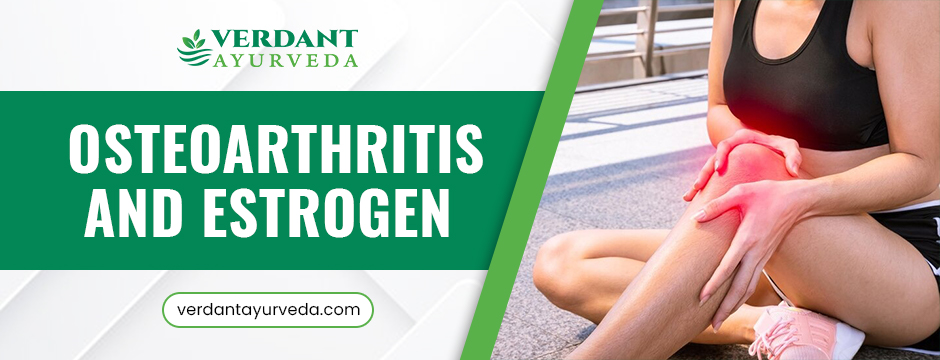Osteoarthritis (OA) is a degenerative joint disease that impacts millions of people worldwide, causing pain, stiffness, and impaired movement. Research has demonstrated that both males and females are at risk for OA, but consistently finds that females, particularly post-menopausal females, are at greater risk for OA and are more likely to have more severe symptomatic forms of OA. So, the question is: Why?
There is no single explanation for this question, but rather an interaction of anatomical, hormonal, genetic, and lifestyle factors of Osteoarthritis and estrogen. One important player among these risk factors is estrogen, a hormone integral to a woman’s reproductive health and function. Estrogen’s role goes beyond a woman’s fertility or ability to menstruate, as it is also critical to the health of the bone and joint tissues. Therefore, loss of estrogen during the menopause transition can have a cascading effect that exposes joints to greater consequences of overuse and wear.
Gender and Osteoarthritis: What the Research Says
Women suffer from osteoarthritis more than men do, especially because:
- After the age of 50
- Women are more prone to osteoarthritis in their knees and hands than men.
- Women generally experience worse symptoms and higher disability.
A few important statistics on the effects of gender and osteoarthritis:
- Almost 60% of all OA cases are women
- Women have a 2x greater risk of developing knee osteoarthritis than men
- Post-menopausal women report more joint pain and higher levels of inflammation
This may raise the question: What is happening in women’s bodies that explains this risk?
Beyond Being a Reproductive Hormone: The Estrogen Factor
Estrogen is mostly known for its role in managing menstruation, pregnancy, and menopause. However, it also:
- Supports bone density
- Affects the lubrication of the joints
- Regulates inflammation
- Plays a role in muscle and ligament strength
With adequate levels of estrogen, damage to cartilage and bone is reduced. However, with changes in estrogen production in perimenopause and menopause, the risk of joint degeneration may be triggered or accelerated.
How Estrogen Protects Joints?
Here’s how estrogen may protect joints:
Helps the Formation of Collagen
Collagen is important to the elasticity of cartilage. Estrogen is necessary to facilitate the synthesis of collagen and the stabilisation of collagen in the joints.
Controls Inflammatory Responses
Osteoarthritis and estrogen are known to have an anti-inflammatory effect. With lower estrogen levels, the inflammatory cytokines are known to be produced in larger amounts, which act to break down the other tissues in the joints.
Helps with the Maintenance of Synovial Fluid
Synovial fluid acts as a lubricant between the joints. Estrogen plays a role in maintaining synovial fluid levels, which in turn helps facilitate movement and reduce friction.
Helps Support Bone Density
Estrogen supports bones and bone density, and lower bone density due to less estrogen can lead to osteoporosis, which may lead to strain on the joints.
Why Menopause Is a Tipping Point?
Most women begin to experience a natural decline in estrogen in their late 40s to early 50s. As this hormonal shift occurs:
- Joint pain and stiffness increase
- Risk of osteoarthritis spikes
- Muscle mass decreases, further stressing joints
Many women report their first signs of osteoarthritis during or shortly after menopause, indicating a strong hormonal connection.
Other Contributing Factors in Women
While estrogen is a major factor, other biological and lifestyle components contribute to higher Female osteoarthritis risk:
- Joint Anatomy: Women have wider hips, which alter knee alignment and load-bearing stress.
- Ligament Laxity: Women’s ligaments are generally more elastic, which may affect joint stability.
- Obesity: Higher body weight increases joint stress, especially on the knees.
- Physical Activity Levels: Fluctuations in activity due to caregiving roles or hormonal changes can affect joint strength.
How Women Can Protect Their Joint Health?
Regardless of whether you are in your 30s or post-menopausal, you can take proactive measures to prevent the risk of osteoarthritis.
Keep Moving
Low-impact exercises, such as walking, yoga, and swimming, will maintain your joint flexibility and increase the strength of muscles that support your joints.
Maintain a Balanced Body Weight
Excess weight is among the significant risk factors linked with osteoarthritis. Even one pound of weight loss results in a substantial reduction of pressure on the knee joints.
Eat an Anti-Inflammatory Diet
Foods containing omega-3 fats, antioxidants, and high fibre content assist in reducing inflammation. You should minimise processed foods, added sugar, and excessive red meat consumption.
Support Your Hormone/ Hormones
Exposure to natural therapies, supplements, herbs, or Ayurvedic techniques can support your hormone health and help relieve some of the menopausal challenges.
Consider Joint Supplements
Natural supplements such as turmeric, boswellia, and ashwagandha are proven to assist with joint inflammation and pain.
Bottom Line

Understanding why women are more prone to Osteoarthritis and estrogen begins with acknowledging the vital role in joint health. The decline of this hormone during menopause makes women more susceptible—but that doesn’t mean joint degeneration is inevitable.
For those looking for natural support for joint health and hormonal balance, Verdant Ayurveda provide ayurvedic consultation tailored for women’s wellness. With personalised consultations, we combine the ancient wisdom of Ayurveda with modern insight to help you live a pain-free, vibrant life.
